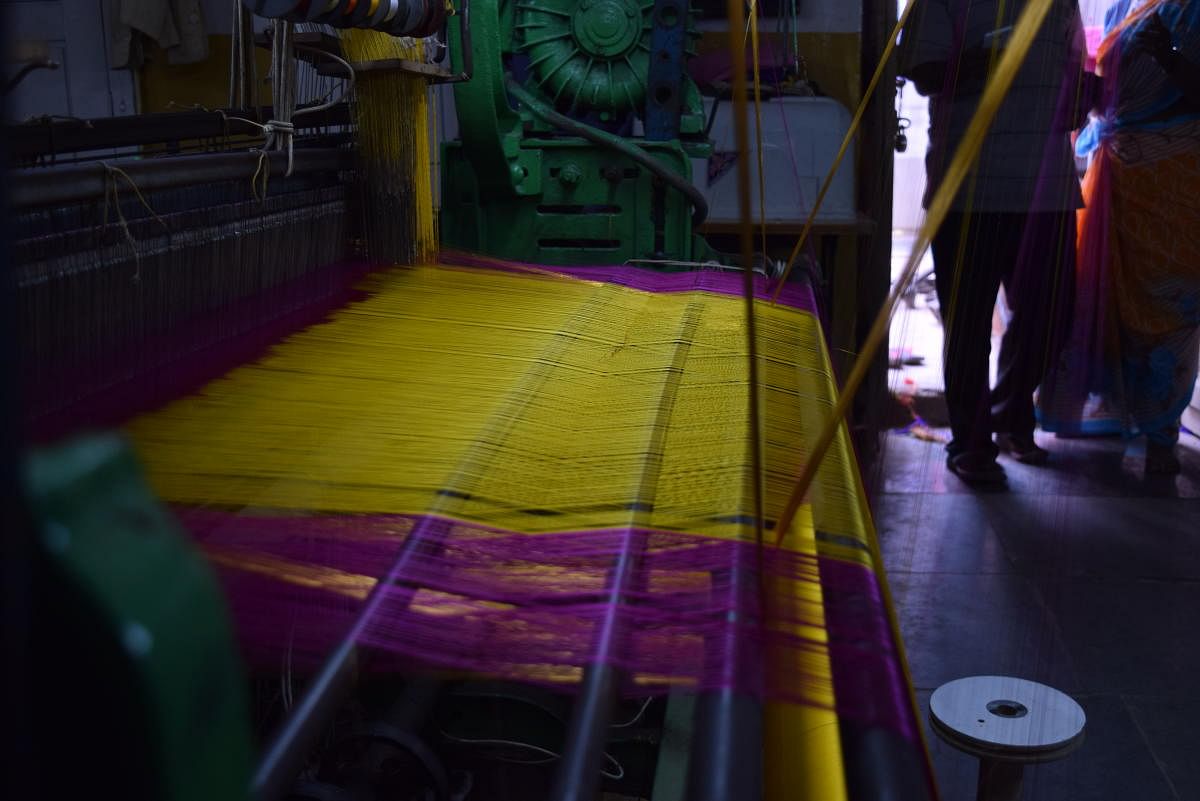A legacy that may soon fade away




In the town of Ilkal, among the artisans who have been weaving Ilkal sarees, the pride of Karnataka, a few are frustrated, a few exasperated, a few others have made a decision.
If you walk on the streets of Chauhan Plot in Ilkal in Bagalkot district, you’ll hear the clucking of power loom machines. The sound is loud, rigorous, and relentless. On entering any of the corrugated tin sheds there, you will see power looms being run by busy hands and scrupulous eyes to make the beautiful Ilkal sarees.
Working inside one such shed, are the twins - Ramanna and Lakshmana - along with Ramanna’s wife, Jayashri. The twins are exasperated, not only of being unable to save for a tomorrow but also of answering people who come to interview them.
Out of kilter
“Every year about four people come and ask us about our lives, they ask us about being happy. I tell them: I’m burdened with loans floating atop my head. But nothing changes ever. Nobody does anything. My life is far from getting any better. What will your writing do anyway?” rebukes Ramanna. Lakshman resonates with him. He tells how the ends are met on a daily basis but there is always uncertainty about tomorrow. The family works all days a week and each of them gets paid Rs 95 per saree. On an average, they weave two sarees in a day. “If there are no power cuts, we consider ourselves lucky because then we are able to weave three sarees,” Jayashri points out.
This weaving inheritance, in their words, seems more like an inheritance of loss. “We don’t know to do anything other than weaving this Ilkal saree. We will have to join as workers in a hotel or dhaba but we won’t. Never!” declares Ramanna.
Shankar Ulli, whose shed lies right behind Ramanna’s, is not proud of the artistry passed on to him from his forefathers. He tells, “I do this because it’s paaramparika (a legacy). And I’m trying every possible way to not let my son struggle the way I do.” Ulli points at his son who is working alongside Ulli’s wife in the tin shed and says, “He has studied BSc but has a couple of backlogs. I don’t want him to become a weaver. I have made him join English typing classes so that he can earn elsewhere.”
Not too far from there, located near the Banni Manatapa, is a 104-year-old Silk House, S P Sarode Silk House - winner of awards, big and small, known for quality since its inception. This silk house was a pioneer, back in 2007, in introducing a power loom to weave Ilkal silk sarees. In this occupation, there is no differentiation between men and women, neither in the number of working hours nor in the wages they get. The money varies with the kind of saree the artisans weave. If it’s a checks saree, it needs more time, thereby, they get paid more.
The weavers at Sarode feel proud of their Silk House yet are deeply dissatisfied with their profession per se. “If I decide to take off for a ceremony in my house, not only am I spending more money than usual but also losing out on my daily wages,” says Ravi Unkunti. They feel like they’re living on the edge all the time. They take loans from their bosses and spend the following days repaying them. And this cycle repeats, a vicious cycle, Unkunti adds.
But there is one old man in Ilkal who is proud of his legacy yet practical about its downside. Mallik Maidik Naal Saab, a 65-year-old weaver, owns a handloom near Choudeshwari Temple, and runs it inside his house. He was 12 years old when his father passed away and the threads of the legacy slipped into his hands. In his living room, one will see handlooms, spool of threads, and other related small equipment.
Despite the benefits of a power loom over handloom, he has not taken up the machine. “I am too old for machines. I have thrived on this [handloom] all my life,” he says, with a smile. “It takes many a hand to make one saree on the handloom. My wife, my brother, his wife, and I sit together and weave. The effort that an Ilkal saree entails on a handloom cannot be equated to what we get in return, per person.” But he wishes to weave until his body allows him to.
He has six children but none of them will become an heir to his handloom. “I wanted them to study. So, I made them study. I had to take a lot of loans, that’s another matter. But the good thing is they’re all doing fine. But this legacy shall not go on.”
When it comes to passing on the legacy, the weavers of Ilkal, both handloom and power loom, seem to be in agreement.
Vishala Rajpurohit